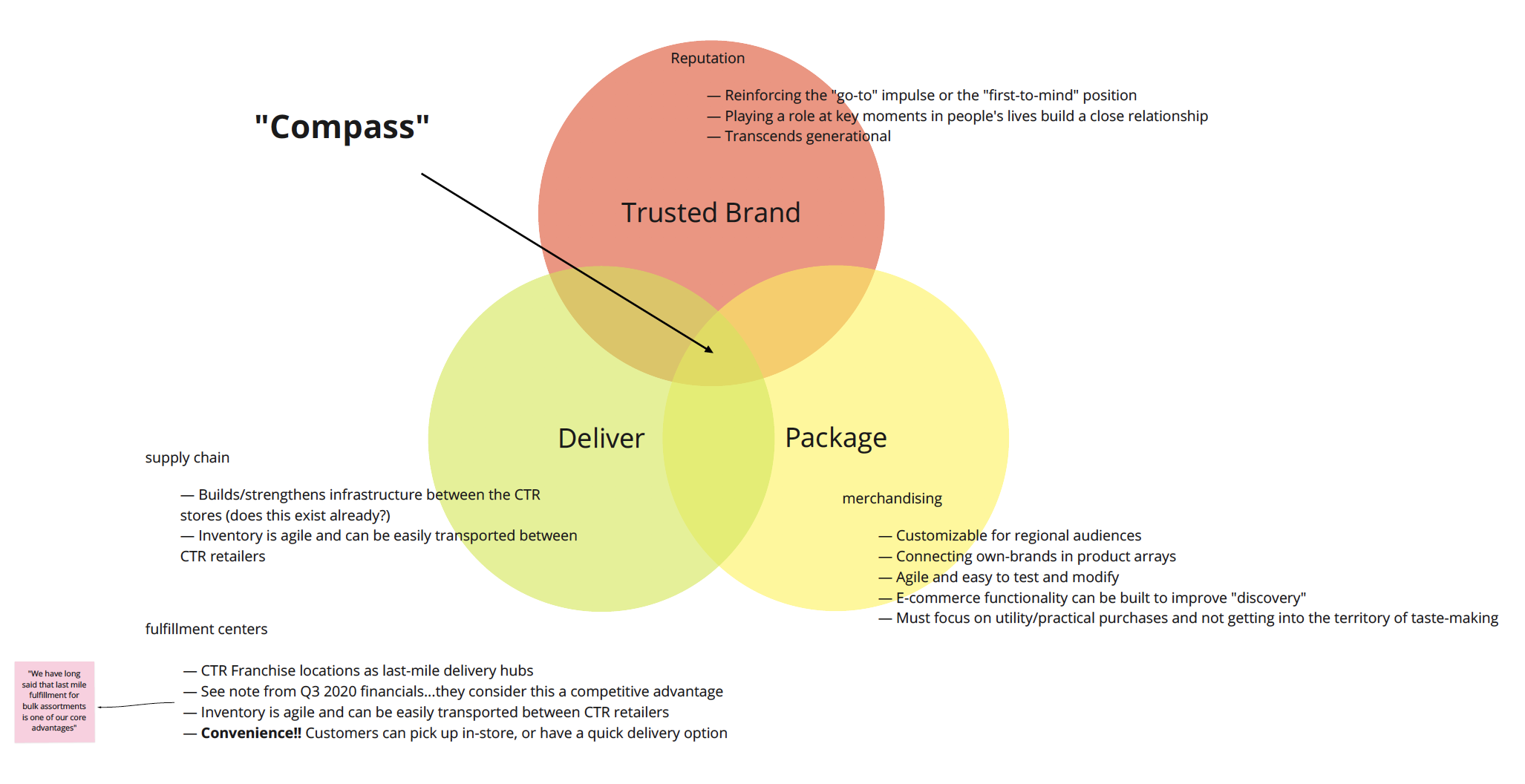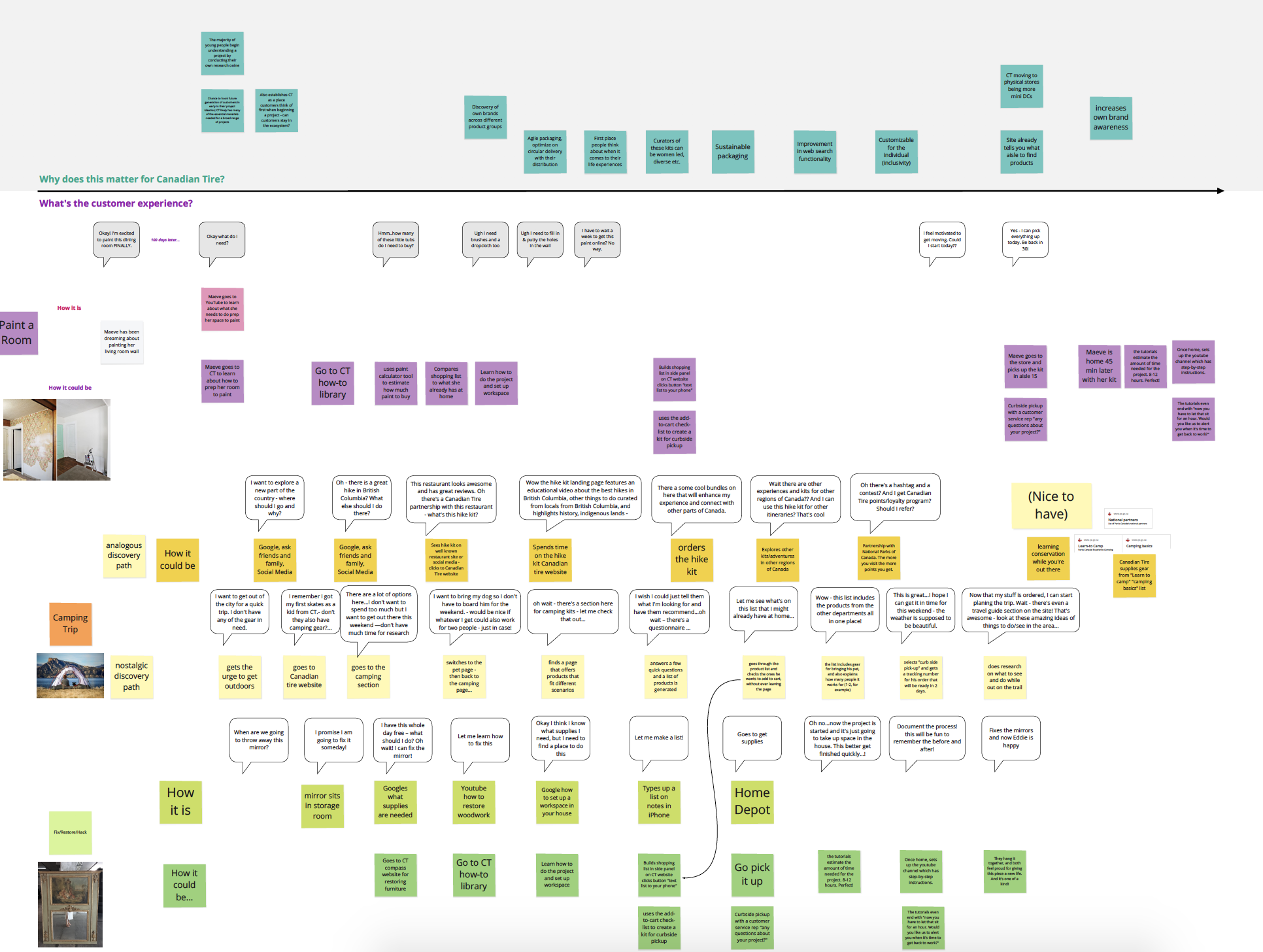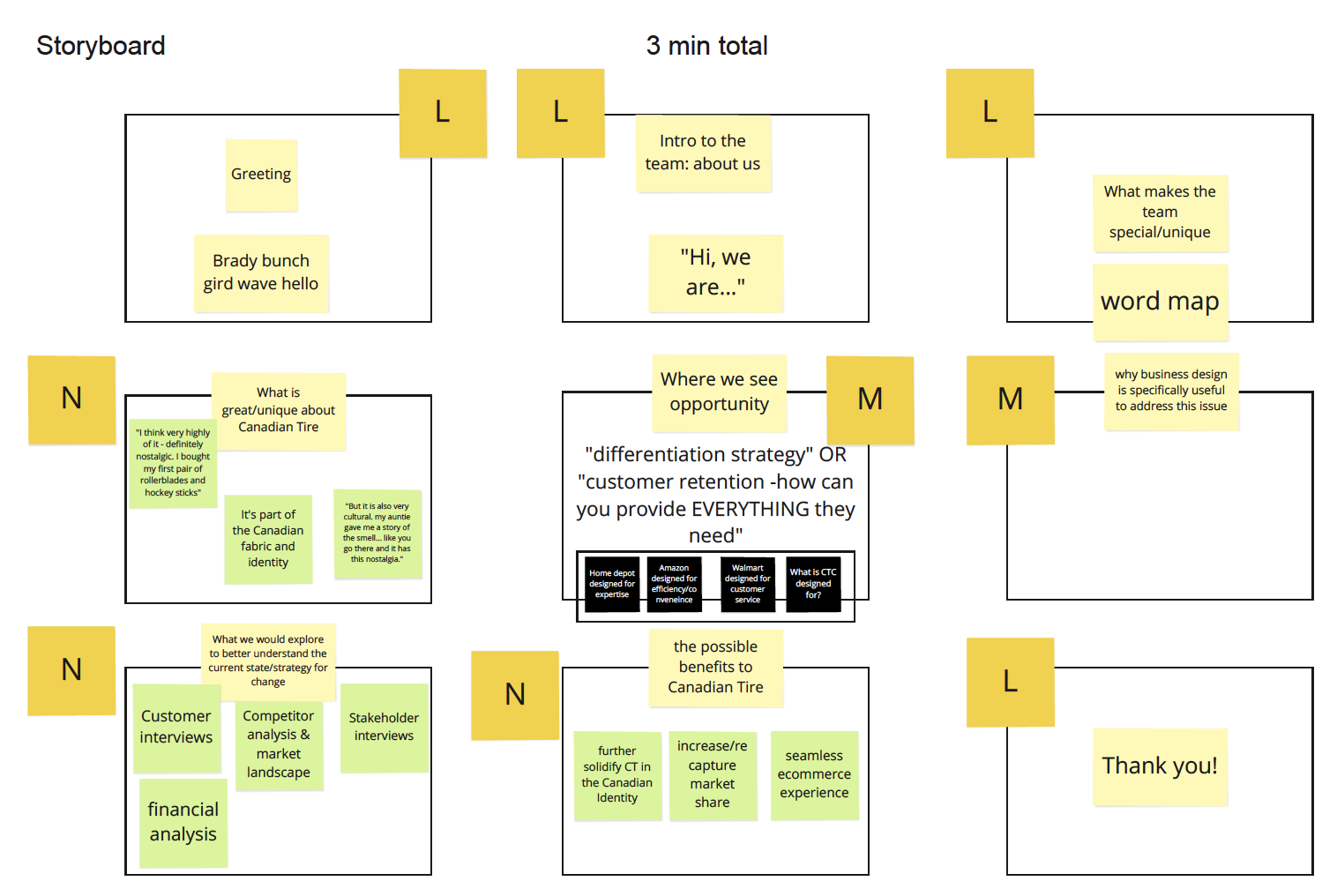Photo by The Creative Exchange on Unsplash
A New Way to Experience Shopping
Research Question:
What do women really mean when they say they want a more personalized shopping experience?
I was approached with a business challenge to disrupt the shopping experience for women by customizing it at every touch point. We were responding to the sentiment that “it all looks the same,” and the assumption that women were willing to delay their purchase gratification in exchange for a more personalized experience. I worked directly with the founder, and was the primary design strategist.
Process:
In order to test this theory, we developed a strategy to test a highly personalized user experience, and the supply chain’s responsiveness. The hypothesis was that women were looking for more distinctive, personalized styles, and that a feeling of fatigue from the shopping experience could be re-energized through customization.
Through a series of in-person sales events, we developed direct line of communication with about 50 women in two key markets. This group of beta-testers went through the process of customizing their garment, and the company tested the supply chain side, including turn around time, quality control, and efficiency.
The garments were shipped out, with a survey to respond about the experience and the accuracy of the fit.
Our objectives were to test the user experience, identify any weaknesses in the supply chain, and rank the value of each personalization activity. We achieved all of these goals, and took away some important insights identifying the strengths and weaknesses of both the experience and the supply chain. Based on the insights, below, a new and more resilient business model.
Key Insights:
The experience strongly influenced the perception of, and the emotional connection to the garment.
The semi-couture element of the business model was not as important as the novel shopping experience.
Many of the alterations required only minor tweaks from the standard sizing, meaning that customization was not necessary for close to 80% of the customers.
Women have trouble measuring themselves with the required accuracy for a custom garment, so it was unlikely this would work without customers being measured in person by someone from the team.
Most of the shoppers gravitated towards the fabric rack, before the garment rack. The texture and color sparked creativity, whereas the classic silhouettes matched patterns of fit and proportion that they already knew.
When the retail price is right, shoppers factor in tailoring costs when buying a dress.
Outcomes:
This led to a simplified business model and savings in time and resources including supply-chain complexity, the required specialty software training and licensing, and the potential problems with inventory from unsaleable returned goods vs too-strict return policies.
A New Era for a Canadian Retail Staple
Research Question:
What might Canadian Tire do to package and deliver viable solutions, centered around their portfolio of own-brands, that deliver greater value to consumers, differentiate themselves in the market, and grow their role as a trusted brand?
Photo by Matthew Fournier on Unsplash
Process:
As semi-finalists in a design competition for the 2021 Rotman Design Challenge, our team of 6 multi-disciplinary women developed a proposal for an omni-channel experience to bring a legacy retailer into a new era.
The entire project was conducted remotely, over 6 weeks, with team members across 3 time zones.
Our asynchronous work all happened in a shared whiteboard that allowed us to co-create in between our synchronous sessions.
As a business researcher and strategist on the team, I was responsible for desk research, landscape mapping and signal scanning, then co-developing the business case and the business model for our proposal.
Hypothesis
If we create a personalized omni-channel experience that meets millennial customers at their key life moments, bog and small, we can turn nostalgia into trust, and loyalty.
Key Insights:
Trust in Canadian Tire is generational, but nuanced. Older folks describe it as “trust,” younger folks describe it as connection or “nostalgia.”
There is a strong DIY culture for "millennial firsts" life milestones, both major and mini. They value convenience and are budget-conscious, wanting to fix things on their own, on their own time.
There is no one “Canadian identity.”
The Canadian Tire brand, is more important to customers than the brands within the store, including CTR own-brands.
Outcomes:
We developed an omni-channel bundling experience called “Compass.” Compass is a seamless omni-channel bundling journey that meets Canadian Tire customers at major and mini life milestones. We set out to convert nostalgia into action, and provide an experience that would bring Canadian Tire top of mind for key life moments, both big and small.
Compass seamlessly integrates into the core operational objectives to package and deliver viable solutions, while strengthening and future proofing its own brands and position as “Canada's store” by *being there* to answer their customers' needs at key life moments.
A Third Space for Women
Research Question:
What do uncompromising women living in cities need most in a third space?
Process:
Together, in partnership with the co-founder of an international women’s speaker series and non-profit, I was responsible for the business case and financial modeling, for testing the viability of the concept with experts across several architectural and hospitality disciplines, and doing user research to answer the underlying question of what a third space for women in the city should offer, and at what price.
Key Insights:
Women don’t want to add another monthly expense unless it replaces current expenses (and improves on them)
Women are loyal when they find a service provider they like
Women in cities make XX # of stops per day on average from when they leave home to when they return at the end of the day
Our surveys showed that women take for granted that men can do business during activities, while women’s opportunities are more limited *this insight seems the most transformational
Outcomes:
Our resulting concept was a social club concept that offered key services to women living in cities. The mission centered around giving women a space that was their own, where all aspects of their life could be managed and included at varying degrees.









